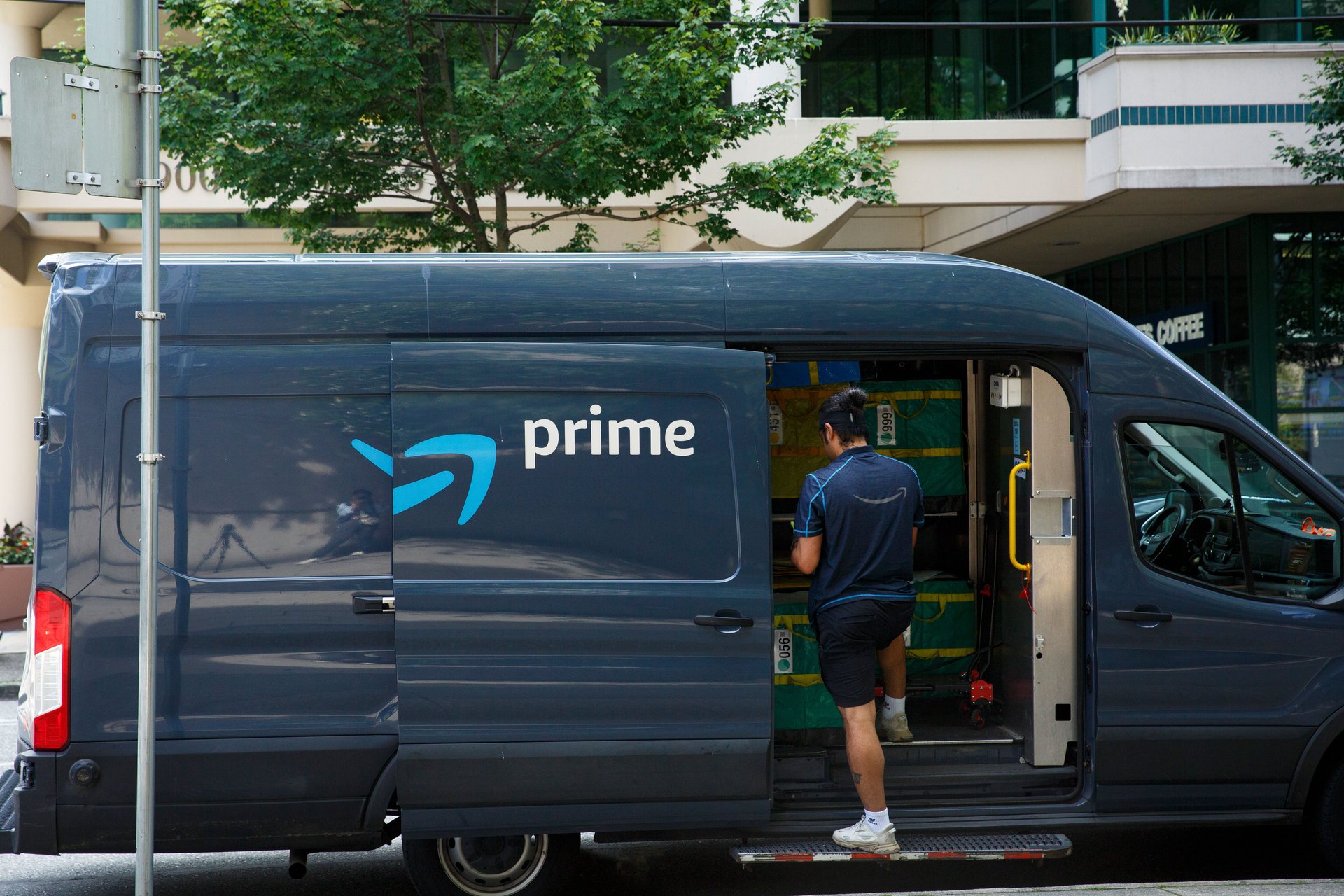Does Amazon owe you money? Here’s how to check after its $2.5 billion settlement
The FTC forced Amazon into a $2.5 billion settlement over Prime signups and cancellations. Millions of users could see refunds — of up to $51

Isabella Falsetti/Bloomberg via Getty Images
For once, forgetting to cancel a subscription could actually pay off. Amazon is shelling out a record $2.5 billion to settle accusations that it tricked users into signing up for Prime and then buried the exits. Roughly $1.5 billion of that money will go to customers, and while the checks won’t make anyone rich — the maximum is $51 per person — they mark the rare case where a subscription dark pattern might come back to haunt the company, not the customer.
Suggested Reading
The refund pool covers Prime memberships between June 23, 2019, and June 23, 2025. Who gets what depends on how you got in — and how much you actually used it. If you were funneled into Prime through one of Amazon’s “challenged enrollment flows” (a checkout page prompt, a Prime Video pop-up, or a one-click shipping nudge) and you barely touched the perks, you’re in line for an automatic payout. Amazon has to process those refunds within 90 days of the settlement’s approval.
Related Content
For everyone else — the so-called heavier users or the people who got tangled up trying to cancel — there’s a claims process. That group still qualifies if they used Prime sparingly, but they’ll need to file paperwork once Amazon opens the portal. The company is required to send notices within 30 days after the automatic payments are finished, and consumers will have six months to respond.
The settlement doesn’t just cut checks: Amazon also has to simplify its cancellation system, add obvious “decline” buttons, and stop burying terms under layers of friction. So the FTC isn’t just paying you back — it’s rewriting how Prime gets pitched in the first place.
Who’s in line for a Prime refund?
Some people will be paid without having to file a single thing. To land in this bucket, two things generally need to be true:
- You enrolled through a “challenged enrollment flow” (e.g., a checkout prompt, Prime Video sign-up, one-page checkout); and
- You used three or fewer Prime benefits (think: Prime shipping perks, Prime Video, Prime Music, etc.) in any 12-month period during the window. If that’s you, Amazon issues the refund automatically after the fund is set up. Using more benefits makes automatic eligibility less likely because regulators view that as meaningful use.
If you (a) signed up through a “challenged” flow but used more than three benefits, or (b) tried to cancel but got stuck or accepted a “save” offer? You may still be eligible for a refund — but you’ll need to file a claim when the portal opens. Expect to receive some sort of notice after the automatic payouts begin; you’ll get 180 days to submit your claim once you receive the form. Details will come via Amazon or the settlement administrator.
Refunds are capped at $51 or the actual membership fees you paid, whichever is lower. Automatic payments are due within 90 days of the settlement’s approval, while claim-based payouts will come after Amazon processes submissions.
“Challenged enrollment flow,” decoded
The FTC singled out four of Amazon’s trickiest sign-up funnels — the Universal Prime Decision Page, the Shipping Option Select Page, the Prime Video enrollment flow, and the Single Page Checkout — along with their many variations over the five-year window. That means: If Prime was added during shopping/checkout or while starting Prime Video (versus you intentionally navigating to Prime’s sign-up page), you likely passed through a challenged flow.
How to check your account:
- Look up your Prime start date and the bill that first charged you; if it aligns with a purchase date, that supports a checkout-based add.
- Search your email for “Your Prime membership is now active” around that time; messages tied to an order or streaming prompt are a clue.
- Try to recall starting cancellation, pausing, or accepting a “stay” offer. If you ever clicked “cancel” only to hit a wall of prompts, save the receipts — those attempts can support a claim.
What to do now
- Check your dates: If your Prime membership began or renewed between June 23, 2019, and June 23, 2025, you’re in the refund window. Anything outside that range? No refund.
- Know your lane:
- Light user + tricky signup → automatic payout. If Prime slipped in through a checkout nudge or a streaming pop-up and you barely touched the perks, Amazon owes you without paperwork.
- Heavier use or cancellation drama → file a claim. If you leaned on Prime more often or hit roadblocks trying to cancel, you’ll need to go through the claims portal once it opens.
- Gather your proof: Hang onto billing statements, account screenshots, and any cancellation attempts or “stay” offers. The more receipts you have, the smoother your claim will be.
- Stay alert: Keep an eye on the email tied to your Amazon account, and check the FTC’s settlement page. That’s where the claims portal and deadlines will drop.
Why this matters
The other half of the settlement isn’t about refunds at all — it’s about fixing the system that got Amazon in trouble. Going forward, the company has agreed to add clearer “decline Prime” buttons, to put renewal terms upfront, and to make cancellation as simple as signing up. An independent monitor will be watching.
For regulators, this is a marquee win against so-called “dark patterns,” the design tricks that companies use to keep subscriptions sticky. For Amazon, the settlement is an extra-public reminder that the convenience pitch of Prime — free shipping, one-click checkouts, streaming extras — comes with strings attached. And for millions of Amazon subscribers, this is just one more reason to check your inbox.
